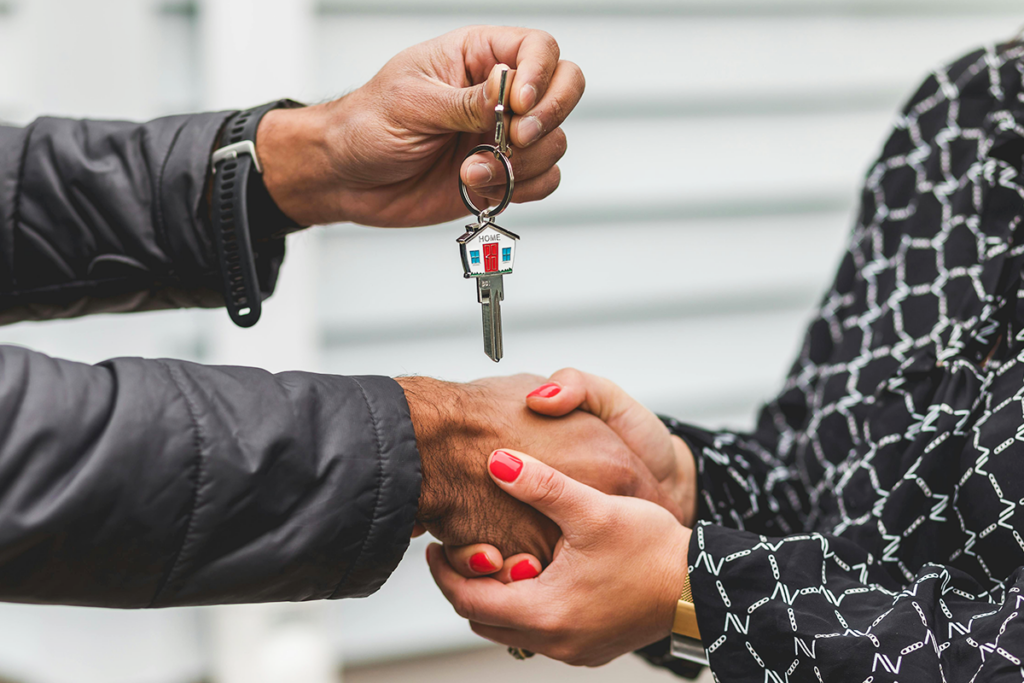by Supreme Lending | Aug 14, 2024

There are several things to consider when deciding to refinance* your mortgage. It’s essential that you’re well-informed and ready to make an educated home financing decision to reach your goals. Once you’ve established how soon you can refinance, here are seven other important considerations.
1. Home Equity: The Foundation of Refinancing
One of the first things to evaluate when deciding to refinance your mortgage is how much equity you have built in your home. Equity is the portion of the property that you truly “own”—the value of your home minus your mortgage debt. Typically, lenders require that you have at least 20% equity in your home to qualify for a refinance. If you haven’t built up sufficient equity, you may not be eligible or you may receive less favorable terms. Your home equity is especially important when considering cash-out refi loans.
2. Credit Score: Your Financial Passport
Your credit score is crucial when it comes to your mortgage and loan program requirements. Your credit reflects your financial history. It also helps lenders determine a borrower’s potential risk. A higher credit score may help you unlock a more favorable mortgage. Before applying for a refinance loan, understand where you stand with your credit. Also, ensure that you’re up to date on making other debt payments.
3. Debt-to-Income (DTI) Ratio: Balancing Your Financial Obligations
Lenders will also review your Debt-to-Income (DTI), which is the ratio percentage of your monthly income that goes toward paying debts. A lower DTI ratio can demonstrate to lenders that you’re capable of managing your current debts and have the ability to repay your mortgage. Generally, a DTI of 43% or less is preferred but some loan programs and lenders can be more flexible and accept higher ratios.
4. Closing Costs: The Price of Change
Refinancing isn’t free. Don’t forget about the closing costs and associated fees that come when you refinance your mortgage. These can include application fees, originating fees, appraisals, and more. These expenses can add up to anywhere from 2% to 6% of the loan amount. It’s vital to review these costs to determine if refinancing makes sense for you. A breakdown of refinance closing fees will be included in your mortgage closing disclosure.
5. Break-Even Point: Calculating the Payoff
Understanding your break-even point is essential when you refinance your mortgage. This is the point at which your possible savings from a new loan exceed the costs of refinancing. To calculate this, divide the total cost of refinancing by the potential monthly savings from the new monthly mortgage payment. The result is the number of months it may take to recoup the costs. If you plan to stay in your home past the break-even point, refinancing may be very beneficial.
6. Interest Rates: When Is the Right Time?
Interest rates are also a driving factor when deciding to refinance your mortgage. A general rule of thumb is that refinancing is worth considering if you can reduce your interest rate by at least 0.5% or more. However, every borrower’s situation is different, so it’s important to analyze how a new rate will impact your unique financial picture and monthly mortgage payments. There are other reasons to refinance beyond the interest rate.
7. Private Mortgage Insurance: Can You Remove It?
If you put less than 20% down payment on your initial mortgage, you’re typically required to pay for private mortgage insurance (PMI). This protects lenders in case of a default on the loan. It’s an additional cost to your monthly payments. However, if you have more than 20% equity built in your home, refinancing may help remove the cost of PMI and reduce your payments.
At Supreme Lending, we understand that deciding to refinance your mortgage is a significant step, and you deserve significant service. By carefully weighing these seven considerations, you’ll be in a strong position to make a decision that aligns with your desired outcomes. When you’re ready to discuss your mortgage and refinancing options, our team is here to guide you every step of the way.
*By refinancing an existing loan, total finance charges may be higher over the life of the loan.
by Supreme Lending | Aug 12, 2024
Unlocking Homeownership With Mortgage Gift Funds

When it comes to purchasing a home, the down payment is often a big hurdle for borrowers, especially first-time homebuyers. However, there may be an opportunity to help make homeownership a reality through mortgage gift funds. If you’re offered gift funds to use toward a home’s down payment or closing costs, it’s important to understand how the process works and what is needed. At Supreme Lending, we’re committed to guiding you through the mortgage process to achieve your dream of owning a home—that includes navigating gift funds.
What Are Mortgage Gift Funds?
Gift funds are sums of money given by family members, friends, or other eligible benefactors that can be used for the down payment or closing costs on a home purchase. These funds are a generous way for loved ones to help you invest in your homeownership journey without any expectation of repayment.
How Do Gift Funds Work?
Using gift funds for a mortgage is straightforward but requires adherence to certain rules to ensure they’re accepted by lenders. Here’s what you need to know:
- Documentation. The donor must provide a gift letter stating the amount of the gift, the relationship to the recipient, and that no repayment of the money is expected or required.
- Source Verification. Lenders will require proof of the donor’s ability to give the gift, often in the form of bank statements.
- Transfer Trail. It’s also crucial to provide documents verifying the transfer of funds from the donor to the borrower to satisfy lender requirements.
Lenders require these factors as confirmation that the gift isn’t in fact a loan, which would impact the borrower’s Loan-to-Value (LTV).
Guidelines for Loan Types
Depending on the type of loan you’re considering, there are specific guidelines to follow when using gift funds. These specify who may be eligible to provide the money and how much.
Conventional Loans
For conventional loans, gift funds may be used for some or all the down payment, closing costs, and financial reserves—as long as it’s from an acceptable source. The gift can be provided by a defined family member, including relatives by blood, marriage, adoption, legal guardianship, or domestic partner. The donor may not be or have an affiliation with the real estate agent, builder, developer, or any other interested party to the transaction.
Gift funds can be used for a primary residence and second home. Investment properties are not eligible. Minimum borrower contributions may apply depending on the down payment amount.
FHA Loans
Insured by the Federal Housing Administration, FHA loans offer a little more flexibility when it comes to mortgage gift funds. Donors can be family and other eligible givers such as a close friend, an employer or labor union, and charitable organization. A governmental agency or public entity that provides down payment assistance programs may also be eligible. However, cousins, nieces, and nephews are not qualified to provide gift funds for FHA.
VA and USDA Loans
While these government-insured loan options do not have down payment requirements, gift funds can still be used to cover closing costs. The gift can be provided by anyone that does not have an affiliation with the transaction. However, gift funds cannot be used to meet reserve requirements for VA and USDA loans.
Advantages of Mortgage Gift Funds
Ultimately, gift funds can help open doors to homeownership if you may not have qualified without the funds for a down payment or closing costs. Potential benefits of receiving gift funds include:
- Lower the financial burden of a down payment
- Improve your Loan-to-Value ratio
- May help you qualify for a more favorable mortgage
- Allow you to maintain savings for other expenses or emergency funds
Down Payment Assistance Alternatives
If you don’t have the option to receive gift funds, there may be other options to consider buying a home with less upfront costs. For example, FHA loans require a lower 3.5% down while VA and USDA loans offer no down payment requirement. For Conventional loans, eligible first-time homebuyers may put down just 3%.
There are also several down payment assistance programs designed to help more people achieve homeownership. Supreme Lending offers the Supreme Dream Down Payment Assistance that offers a fully forgivable second loan to cover the down payment and closing costs. There are also several local, regional, or state-specific programs available to provide aid. Eligibility typically depends on factors such as income, credit score, and location.
Our team at Supreme Lending believes that informed homebuyers make empowered homeowners. Understanding gift funds and alternatives for down payment assistance can help open doors to homeownership that might otherwise seem closed.
Ready to take the next step to buying a home? We’re here to guide you every step of the way. Contact your local branch to get started.
by Supreme Lending | Aug 9, 2024
Celebrate new beginnings with these quick and easy back-to-school homeownership tips.

As summer winds down and it’s back to school season, it’s not just the kids who need to get ready for the new academic year. Homeowners can also take this time to reassess, reorganize, and revitalize their living spaces and check in on their mortgage. At Supreme Lending, we understand that your home is more than just a place to live—it’s a learning environment, a cornerstone of your family’s life, and one of the most important investments. Here are seven practical back-to-school homeownership tips to ensure you’re at the top of the class this school year.
1. Declutter and Donate
When it comes to back-to-school homeownership tips, decluttering is a valuable first step to creating an organized home. Research has found that physical clutter can compete for your attention, resulting in decreased performance and increased stress. Back to school is the perfect time to take on the challenge. Go through closets, pantries, utility drawers, and other areas to remove items no longer needed. You can also give back to your local community by donating any gently used clothing and items to local charities. A clutter-free home supports a clear mind for both studying and relaxing.
2. Organize Study Spaces and Refresh Your Office
With the return to school, having a quiet and organized space for homework, study, and work is crucial. Carve out a dedicated area in your home free of distractions. Ensure that it’s well-lit, stocked with necessary supplies, and comfortable enough to keep concentration levels high. If you work from home, this could be a great opportunity to refresh and beautify your working space by adding house plants, hanging wall art, or painting an attractive accent wall.
3. Deep Clean
Give high-traffic areas like the entryway, living room, and bathrooms a deep clean. These areas tend to accumulate dirt and clutter quicker. Scrub down all showers, bathtubs, and bathroom tiles with proper cleaner. Don’t forget the baseboards, windowsills, and surfaces that can build up dust. A clean environment not only creates an inviting space but can also reduce stress and promote a healthy, positive atmosphere.
4. Implement Energy-Saving Practices and Smart Home Technology
Other back-to-school homeownership tips include enhancing your home technology. Take advantage of energy-saving practices such as programmable thermostats, LED lighting, and smart power strips. Adding innovative smart technology can also enhance things like electricity, lighting, appliances, and entertainment for easier convenience.
5. Evaluate Home Safety and Procedures
It’s important to regularly review your home safety checklist. Double check your smoke detectors, carbon monoxide detectors, and fire extinguishers. Update your first aid kit and ensure everyone knows where it is. Remove any tripping hazards and secure heavy furniture or things mounted on the wall. If you have younger family members, practice emergency plans so they know what to do in case of an unexpected event.
6. Schedule Regular Maintenance
Stay ahead of the game by scheduling regular home maintenance checks around the house. This may include servicing major appliances, trimming the trees, cleaning the gutters, or treating the yard for pests and insects. Preventative maintenance can help save you from potentially costly repairs down the road. With these back-to-school homeownership tips, you can maintain a happy, healthy, and efficient home environment that supports your family and lifestyle.
7. Check In on Your Mortgage
Amidst life’s hustle and bustle, don’t forget to check in on your home loan. Make sure you are still making the most of your mortgage. Do you plan on moving and buying a new property any time soon? Maybe you finally want to make those dream home renovations? Or are you considering a refinance* to access your home equity or lower your current mortgage payments? Using a refinance calculator can help give you a rough estimate of costs to see if you may benefit from refinancing.
Whatever your home financing goals may be, our experienced team at Supreme Lending is here to help you review your mortgage and guide you through the loan process. Find a loan officer near you and get started today!
*By refinancing an existing loan, total finance charges may be higher over the life of the loan.
by Supreme Lending | Aug 1, 2024

When someone asks if it’s possible to add renovation costs to mortgage, the simple answer is yes! When buying a home, people dream of finding the perfect property that checks off all their boxes. However, sometimes the ideal property may need a little work to become that dream home. This is where renovation loans come in. By adding renovation costs to your mortgage, you can finance both the purchase of your home and the necessary improvements into a single loan. Read on to learn more about renovation loan options, benefits, and frequently asked questions.
Types of Renovation Loans
There are several loan programs to consider that can add renovation costs to your mortgage:
- FHA 203(k). This renovation program is an FHA loan, insured by the Federal Housing Administration. There are two options depending on the extent of the home remodel or repairs. The Limited 203(k) is for more minor updates that ensure the home is safe and functional and can include basic cosmetic improvements. The Standard 203(k) option offers more flexibility and larger scale renovations, such as structural foundation or adding square footage. Only primary residences are eligible. Click here to read more about the FHA 203(k) Renovation Loan.
- Fannie Mae HomeStyle®. This is a Conventional loan option to add renovation costs to mortgage. It includes home improvements that are permanently affixed to the property and add value, including luxury items such as high-end flooring, decks, fencing, a pool, etc. Unlike the FHA 203(k), this program can also be used toward qualified second homes and investment properties.
- VA Renovation. This renovation loan is for eligible military Veterans, active duty personnel, and some surviving spouses. It offers the same benefits as VA loans, such as no down payment requirements and lower closing costs, plus the ability to include certain home repairs into a single, affordable mortgage.
- Supreme Dream 203(k). Another exciting renovation loan program that Supreme Lending offers is the FHA 203(k) loan, as noted above, combined with the Supreme Dream down payment assistance resulting in less upfront costs.
How Renovation Loans Work
- Determine Your Renovation Needs. Assess the scope of your renovation project and obtain estimates from contractors to understand the anticipated costs.
- Loan Application. Apply for a renovation loan with a lender. You will need to provide detailed renovation plans. At Supreme Lending, we have a dedicated construction lending team to support all renovation loans for a smooth process.
- Loan Approval. Once approved, the loan amount is based on the projected value of your home after the renovations are completed.
- Renovation Process. Funds are typically disbursed in stages as the renovation progresses ensuring that contractors are paid, and the work is successfully completed.
- Final Inspection. After the renovations are finalized, a final inspection is typically required to verify that the work meets the loan requirements, and any remaining funds are released.
Frequently Asked Questions
Can I add renovation costs to any type of mortgage?
Not all mortgage types allow for renovation costs to be added. Specific loans, such as the programs listed above, are specifically designed to fund renovations and have additional steps and guidelines to follow.
How are renovation costs disbursed with a renovation loan?
With a renovation loan, funds for the purchase of the property are typically disbursed at closing. The renovation funds are placed in an escrow account to be paid out as repairs are completed.
How are renovation loans approved?
Your lender’s underwriting department will help approve the loan application and make sure all guidelines and requirements are met. This includes reviewing the home’s value after the renovations are made. The renovation schedule and documentation are also evaluated to ensure a seamless process.
Are there limits on the amount someone can borrow for renovations?
Yes. Each loan type has specific limits depending on the program. For example, an FHA 203(k) Limited loan currently has a maximum of $35,000* repair escrow amount to use toward the contractor’s costs and renovation fees. In turn, an FHA 203(k) Standard depends on the property’s FHA county loan limit. For Conventional renovation loans, the maximum renovation cost is typically up to 75% of the after-improved home value.
*Note: The FHA 203(k) Limited options will be increasing its maximum limit for renovation costs to $75,000 on or after November 4, 2024.
Click here for a complete guide to home renovation loans that includes a detailed comparison of FHA 203(k) and Conventional HomeStyle® loans.
Want to learn more about how to add renovation costs to your mortgage? Get started in creating your dream home with the help of Supreme Lending. We’re here to help every step of the way.
by Supreme Lending | Jul 29, 2024

If you’re thinking of buying a home, you may want to consider the possibility of seller concessions to help reduce upfront loan expenses. Imagine having a portion of your mortgage closing costs covered or even getting some essential home repairs taken care of without having to dig into your savings. That’s where seller concessions come in, also known as seller assistance. It can be a significant benefit for both buyers and sellers. In this guide, we’ll explore what seller concessions are, seller assist limits, and frequently asked questions.
What Are Seller Concessions?
Seller concessions are contributions paid by the seller that go toward the homebuyer’s closing costs. These can include closing fees, prepaid expenses, or even home repairs or improvements. These concessions can help lower the amount of money a buyer needs to bring to the closing table, making the home purchase more affordable.
The concession amount can be expressed as a percentage of the home’s purchase price or fixed dollar amount.
Examples of What Seller Concessions Can Cover
Seller concessions can be used for a variety of mortgage and homebuying costs including:
- Loan Origination Fees. Fees charged by the lender for processing the loan application.
- Appraisal Fees. This is the cost of having a home appraised.
- Home Inspection Fees. This is the cost of having a home inspected before closing.
- Property Taxes. Prepaid property taxes may be included in closing.
- Title Insurance. This insurance protects the buyer and lender from potential disputes over ownership.
- Discount Points. Also known as mortgage points, these help pay down the interest rate using upfront costs.
- Home Repairs or Improvements. Costs for necessary repairs identified during the home inspection or agreed-upon improvements before the sale.
How Do They Work?
- Negotiation. Seller concessions are typically negotiated as part of the buyer’s and seller’s purchase agreement. This request can be made with help from a real estate agent.
- Agreement. If the seller agrees to concessions, the specific details are outlined in the contract and must not exceed a specified limit depending on the loan type.
- Appraisal. The agreed-upon concessions cannot inflate the property’s value. Lenders require an appraisal to ensure the property’s market value supports the loan amount, including the concessions.
- Loan Approval. The lender will review the agreement and appraisal. This will ensure that the concessions align with the mortgage program’s guidelines.
- Closing. When the loan is ready to close, the costs are applied to the buyer’s closing costs or other agreed-upon expenses.
Who Benefits from Seller Concessions?
Both the buyers and sellers can benefit!
- Buyers. Concessions can lower the upfront costs needed to buy the home, making it easier to afford the property.
- Sellers. Offering concessions can also make the home more attractive for potential buyers, helping sell the home quicker.
Seller Assistance Limits
Limits on how much a seller can contribute vary depending on the loan type and down payment:
Conventional Loans
- Primary residence and second homes:
- 3% maximum with less than 10% down
- 6% maximum with 10-25% down
- 9% maximum with more than 25% down
- Investment properties:
- 2% maximum regardless of down payment
FHA/USDA Loans
- 6% maximum toward closing costs and prepaid items
VA Loans
- 4% maximum toward prepaid items
- No limit for closing costs or reasonable discount points
Frequently Asked Questions
Can the seller cover the entire down payment?
No. Seller concessions cannot be used for the full down payment. They are typically used for closing costs, prepaid expenses, and other associated fees, while meeting the loan guideline limits.
Does seller assistance affect the loan approval process?
Seller concessions themselves do not affect loan approval, but lenders can consider the impact on the Loan-to-Value (LTV) ratio and may require specific guidelines.
How does it impact the home appraisal?
The home’s appraisal must support the purchase price, including any seller contributions. If the appraised value is lower than the agreed-upon price, the lender may require adjustments.
Can a buyer negotiate for concessions?
Yes! Homebuyers can request this during negotiations. It’s essential to work with a knowledgeable real estate agent to help navigate the process.
How do seller concessions benefit first-time homebuyers?
First-time buyers often benefit from this as they may have limited funds for closing costs and other expenses. Seller assistance is another great way for more people to unlock the door to homeownership!
If you’re ready to start your homebuying journey, your local Supreme Lending team is ready to help! Contact us to learn about your mortgage options and get pre-qualified today.





